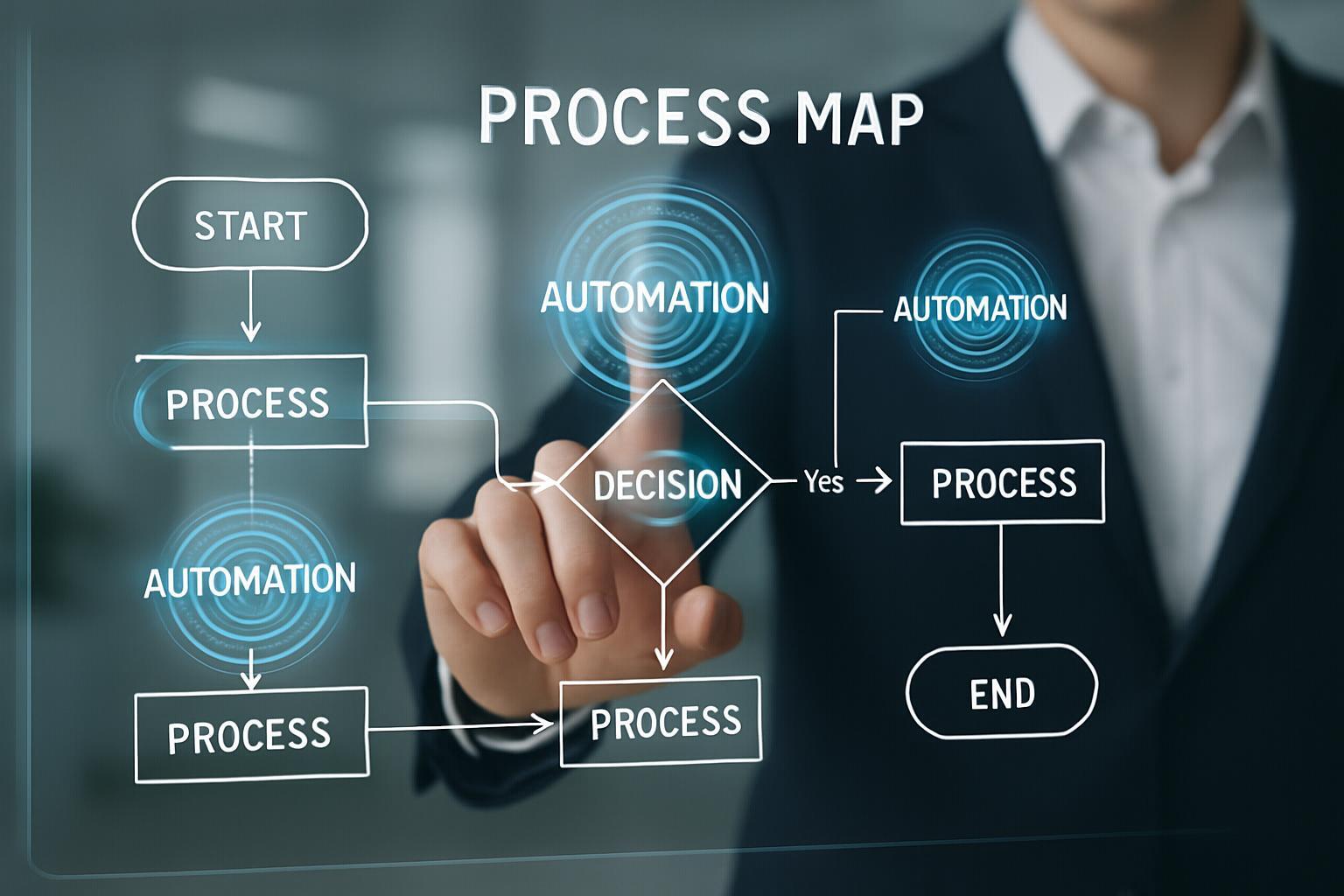Artificial intelligence automation is no longer a futuristic technology; it has become an accessible and transformative tool for any business. Recent data shows that companies implementing AI solutions experience a 5% increase in revenue and a 20% reduction in operating costs. The good news is that starting to automate processes with AI is easier than many business owners think.
Why Automate Business Processes with AI?
Before delving into specific tasks, it's important to understand the real impact of automation in the workplace. AI is generating an annual increase of $2.6 to $4.4 trillion in global GDP, with projections of reaching $19.9 trillion (3.5% of global GDP) by 2030. In practical terms, this translates to up to a 40% improvement in labor productivity in repetitive tasks, freeing up human talent for strategic activities.
Despite these benefits, only 2.13% of SMEs explicitly use AI, according to recent studies. This gap is mainly attributed to a lack of training (mentioned by 51.3% of companies) and technical difficulties in integrating solutions.
5 Tasks You Can Automate Immediately with AI
1. Customer service using intelligent chatbots

Modern AI-powered chatbots go far beyond answering frequently asked questions. These tools can understand the context of conversations, offer personalized support 24/7, and refer complex inquiries to the appropriate department.
Proven benefits:
- 60% reduction in customer response time
- 25% increase in conversion rates
- Ability to manage multiple queries simultaneously
AI-powered chatbots not only generate automatic responses to frequently asked questions but also intelligent query referral and lead capture, significantly increasing conversions. AI automation in this area frees up your service team to focus on complex cases requiring human intervention.
2. Invoice and document processing
Document management is one of the areas where automation in the workplace generates immediate results. AI solutions can extract relevant information from invoices, delivery notes, and other documents, automatically classify them, and update accounting systems without manual intervention.
Measurable results:
- 50% reduction in invoice processing time
- 90% reduction in data entry errors
- Improved tax compliance and payment tracking
Telefónica, for example, managed to reduce the time spent on contract management by 50% by automating processes in this area. These tools automate tasks such as CRM registration and accounting system updates, representing a perfect example of automation with immediate returns.
3. Inventory management and supply chain
Optimizing inventories using AI for SMEs allows for predicting future demands, reducing excess stock, and minimizing stockouts. Algorithms analyze historical patterns, market trends, and seasonal factors to automatically adjust inventory levels.
Quantifiable advantages:
- 20% reduction in operating costs
- 15% increase in product availability
- 25% reduction in tied-up capital
Walmart is a prime example, having reduced operating costs by 20% and increased product availability by 15% through automatic replenishment algorithms. AI automation in this area not only optimizes inventories but also improves the entire value chain.
4. Personnel selection and human resources management
AI tools are revolutionizing the way companies find, evaluate, and retain talent. From automatic pre-selection of resumes to data-based performance evaluation, automation in HR accelerates processes and improves decision-making.
Proven impact:
- 40% improvement in talent retention
- 75% reduction in candidate pre-selection time
- More objective and data-driven performance evaluations
Automation in HR reports a 40% improvement in talent retention through personalized evaluations and real-time feedback. This type of automation in the workplace allows HR teams to focus on people strategy instead of repetitive administrative tasks.
5. Quality control and predictive maintenance
AI is transforming quality control and industrial maintenance through machine vision systems and predictive analysis. Algorithms can detect anomalies imperceptible to the human eye and predict equipment failures before they occur.
Documented results:
- 93% accuracy in defect detection
- 30% reduction in unplanned downtime
- 25% increase in equipment lifespan
Recommended solutions: Blue Prism, machine vision systems, IoT sensors with predictive analysis.
BMW implemented machine learning algorithms for parts inspection, increasing defect detection accuracy to 93% and significantly reducing human error. This automation example demonstrates how AI can improve the quality of the final product while reducing operating costs.
Real success stories in business automation with AI
To better understand the potential of AI automation, let's look at some notable cases:
SEIDOR in Emergencies 112 Catalonia: Implemented a resource management system with AI that achieved 93% accuracy in predictions, optimizing ambulance and personnel deployments. This system has significantly improved response times in critical situations.
Compass in Real Estate: Automated lead classification with AI, achieving a 40% saving in administrative time and a 20% increase in revenue. The system allows real estate agents to focus on clients with a higher probability of conversion.
Almirall in Pharmaceuticals: Reduced errors in quality control through automated reports, freeing up 35% of its team's time for innovation activities. This has accelerated the development of new products and improved accuracy in regulatory controls.
How to implement AI automation in your company
For SMEs interested in starting their automation journey, we recommend following these steps:
- Identify repetitive tasks: Analyze which processes consume the most time and are predictable in their execution.
- Start with pilot projects: First implement solutions in non-critical areas to minimize risks.
- Train the team: Resistance to change decreases when staff understand the benefits and learn to work with the new tools.
- Measure results: Set clear KPIs to evaluate the impact of automation.
- Scale gradually: Once the approach has been validated, expand automation to other areas of the company.
Conclusion: Automation is not the future, it's the present
AI automation has ceased to be an option and has become a competitive imperative. Companies that adopt these tools see immediate returns in productivity and scalability.
For SMEs, the challenge lies in overcoming technical barriers with training and strategic alliances, following proven models in manufacturing, logistics, and services. The next decade will define leaders and laggards based on their ability to integrate AI into critical operations.
Don't wait any longer to implement these automation examples in your company. The technology is accessible, the results are measurable, and the time to act is now.


